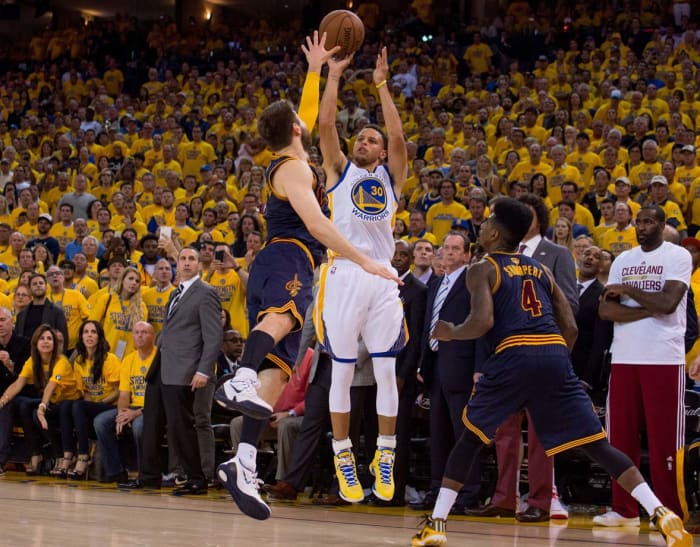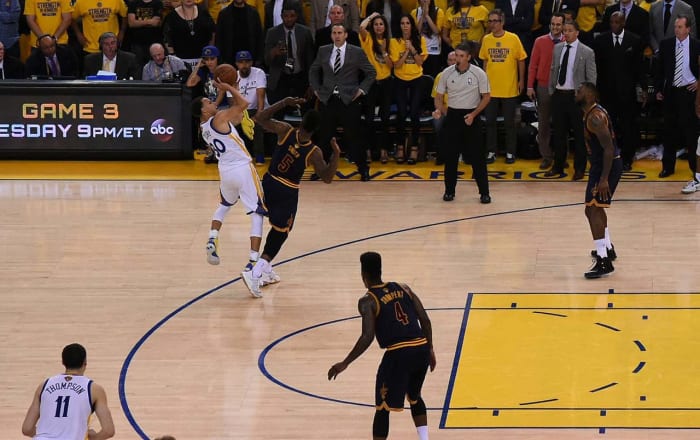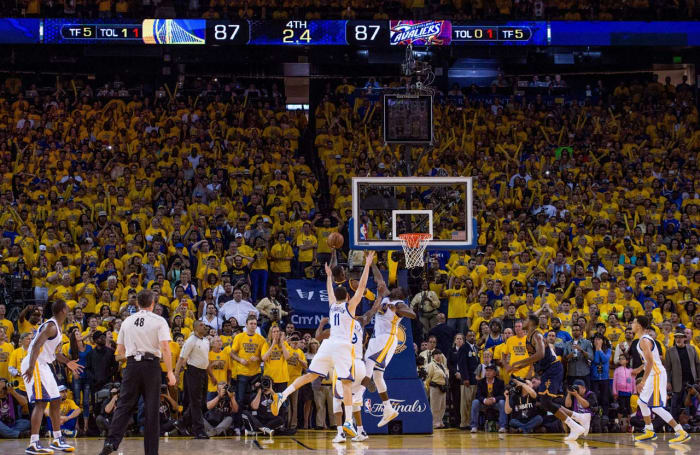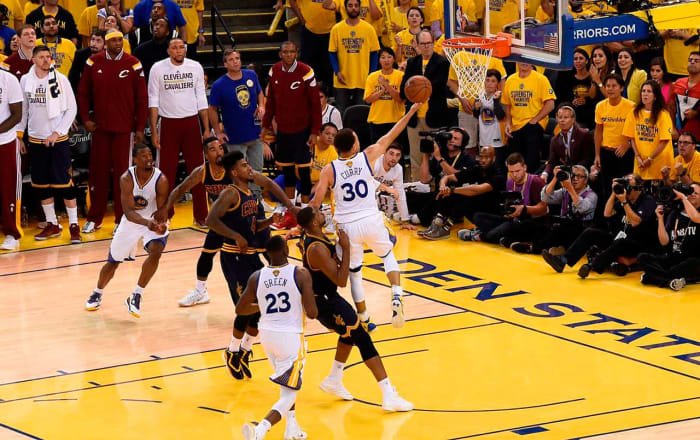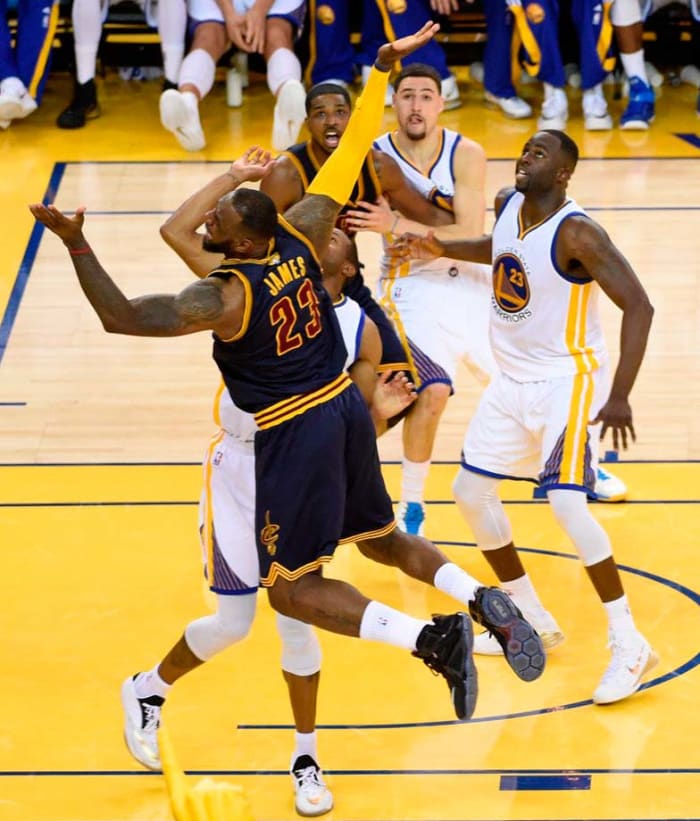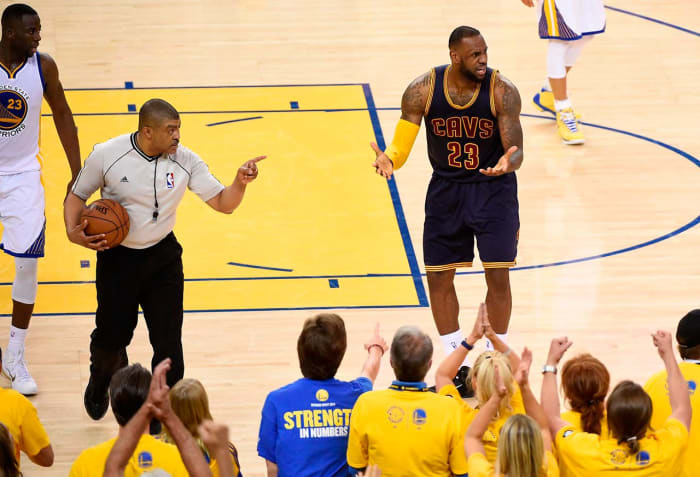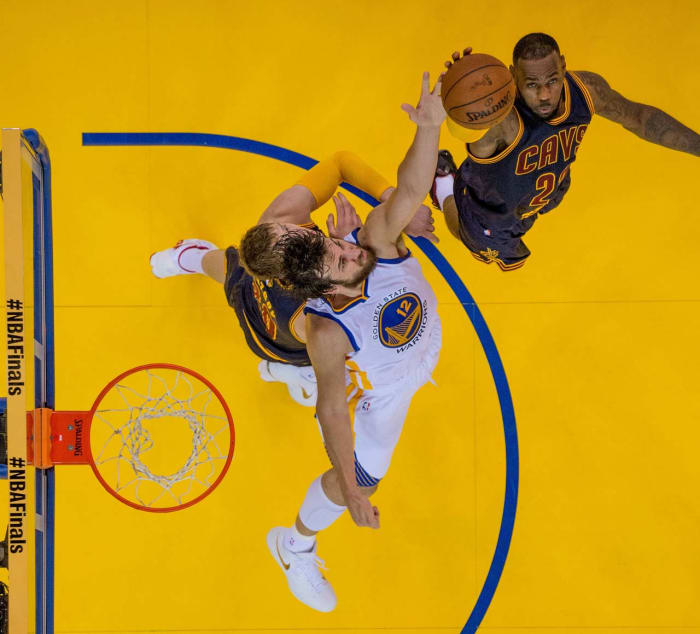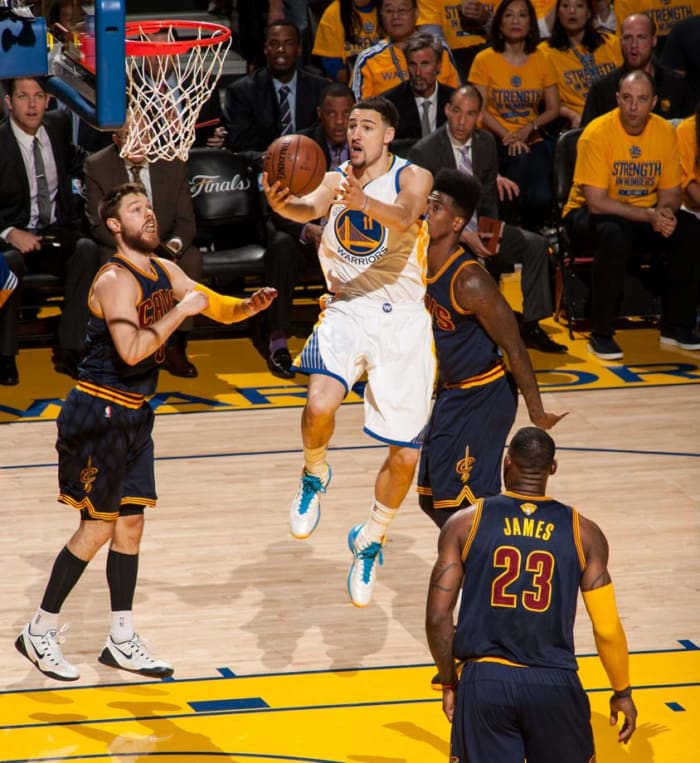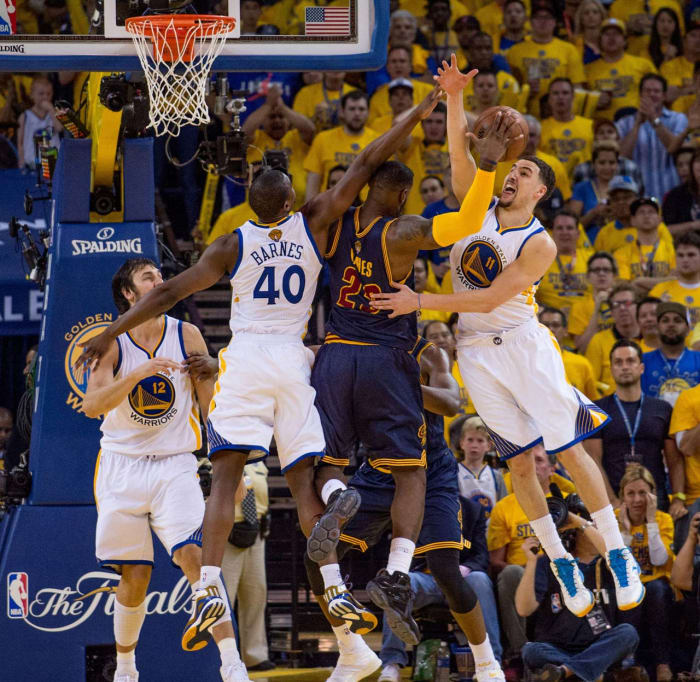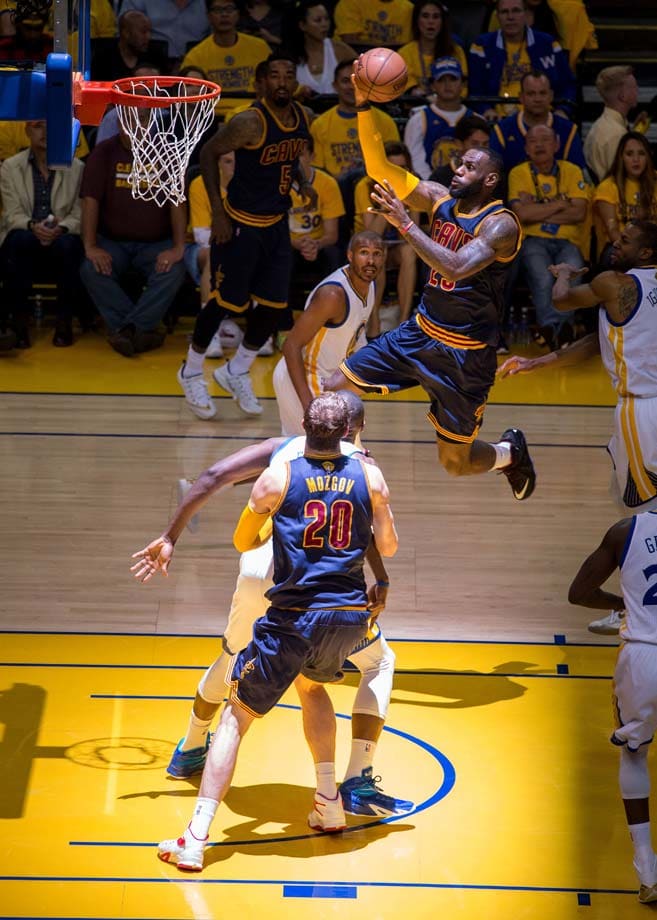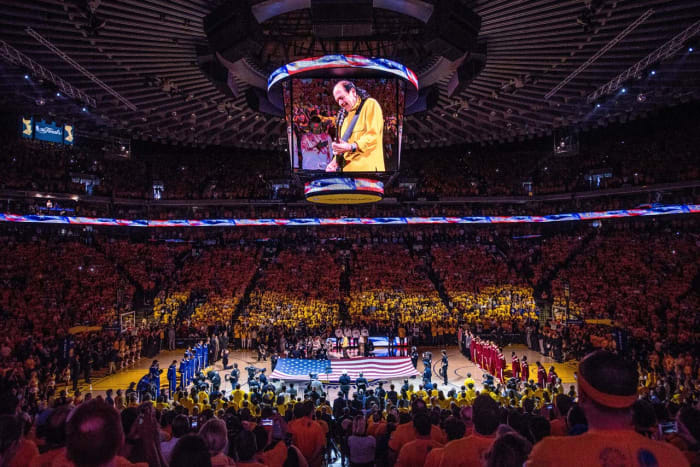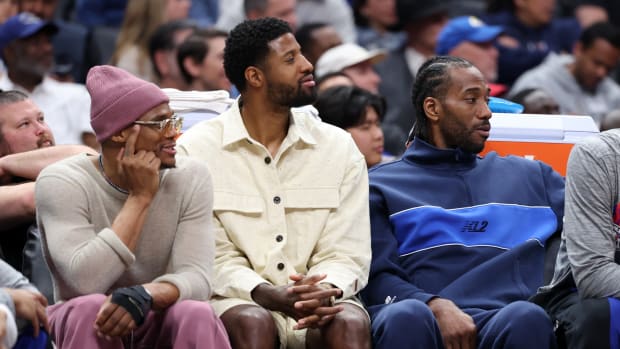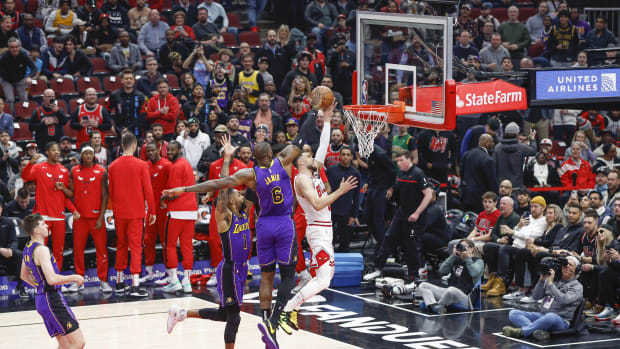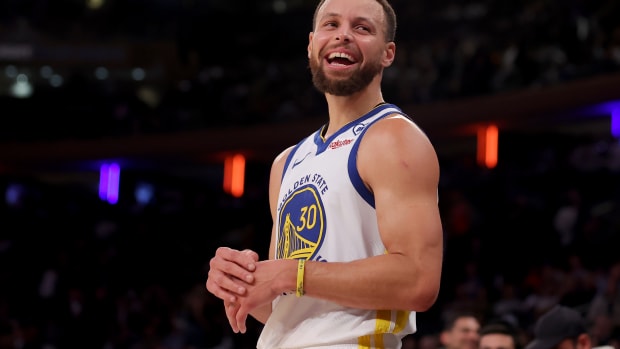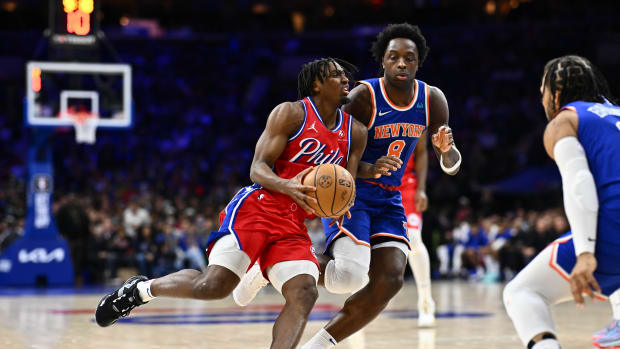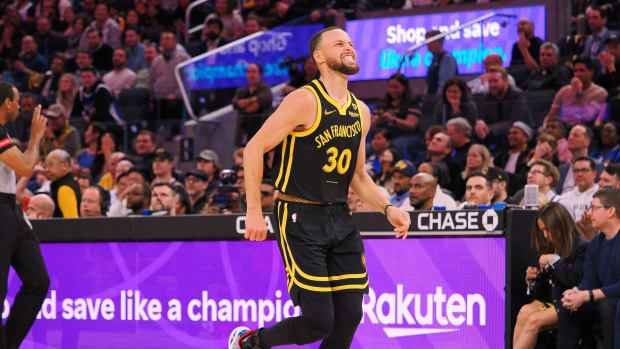NBA Finals: Warriors' learning curve among adjustments to anticipate
In just a few days of championship-level basketball, we've seen back-to-back overtime games start the NBA Finals for the first time in history, 41.5 points a night from LeBron James on average, a Klay Thompson wildfire, a series-altering injury, an uncharacteristically bricky Stephen Curry, the situational stardom of Timofey Mozgov, a collection of should-be game-winners, the awesome persistence of Andre Iguodala, an attempted implosion by J.R. Smith, terrific team defense, the skill and "gamesmanship" of Draymond Green, a night of baffling basketball heroism by James Jones, a now-infamous missed dunk by Marreese Speights, and a split series as the Finals moves to Q. Here's what we can look for in Game 3 as one of these teams claims a 2-1 edge:
• Golden State's learning curve. The precedent of the three previous playoff rounds is this: The Warriors learn you and then break you. It took a few games for Golden State to find its rhythm against New Orleans, Memphis, and Houston. After making a few conscious adjustments, however, it was curtains; the basketball IQ of the players and savvy of the coaching staff have created an incredibly adaptable contender. The pieces are there to run efficient offense and stifling defense. It’s just a matter of tweaking their usage and responsibility slightly as each opponent demands.
- MORE NBA: Schedule | Playoff coverage | Irving injury | Dellavedova stats
One side of the ball is already taken care of. Cleveland shot 41.5% from the field in Game 1 and 32.2% in Game 2—both winnable figures. Any kind of offensive breakthrough could collapse the competitive balance of the series. As formidable as the Cavs have been, they remain a team of few answers. The absences of Kyrie Irving and Kevin Love have locked Cleveland into playing a particular style with six-to-seven players. If Golden State can find daylight for Stephen Curry (who shot 5-of-23 from the field in Game 2), the rising tide of the offense will likely take the Warriors the rest of the way.
This is, of course, far easier said than done. Cleveland has been a terrific defensive team all throughout these playoffs and now bolsters its perimeter coverage with significant minutes for known irritant Matthew Dellavedova. At times, Curry looked worn down by Dellavedova’s denial. He jogged through cuts and idled on the weak side of the floor, both as much a relief to Dellavedova as it was to Curry. Based on how sapped Dellavedova looked after playing 42 minutes in Game 2, the key to creating separation might be the series’ natural attrition. Working new tactical angles might help Curry spring free early. Finding openings to score on a consistent basis, though, may come through by running Dellavedova even harder into Andrew Bogut screens and attacking immediately thereafter.
• Rotation adjustment. The move from Oakland to Cleveland brings about the end of the first stage of these Finals. From that comes opportunity to examine a slightly broader view of the series to date—not just that of a single overtime game, but of two full games of their own complexions. Coaches will pore over film and make all sorts of minor adjustments to how their team initiates its offense, how it rotates in coverage, and how it goes about attacking particular weaknesses.
Despite taking backseat on Warriors, David Lee enjoying team's Finals ride
Other shifts will be implemented in broader terms; the most straightforward address a coach can make, after all, is who plays and how much. One candidate for a minutes adjustment is Timofey Mozgov, who logged just 29 minutes in Game 2 despite carrying the weight of his role with ease. Mozgov has been the Cavaliers’ second-best player in the Finals to date. His defense has stalled out potential drives. His rebounding has forced the Warriors into silly loose ball fouls. His presence has given Cleveland a needed wrinkle to its offense, which is so LeBron-centric at this stage as to risk going stale.
Cavs coach David Blatt has seen 62 minutes of evidence that Mozgov significantly improves his team’s chances to win. He also expressed—with both his minutes allocation and post-game comments—his reluctance to play Mozgov when the Warriors go small. As such, it should be just as interesting to see if Warriors coach Steve Kerr will play even more small ball going forward in an attempt to force his opponent’s hand. Mozgov has killed the Warriors and outplayed Andrew Bogut. Every minute he can be barred from the game is a reward in itself, balanced against the risks of playing small for too long.
- MORE NBA: Oracle Arena | LeBron's legend | Mozgov influence
It’s also worth tracking how both teams handle James Jones, Game 2’s unlikely hero, throughout the rest of the series. Irving’s season-ending injury was especially painful for the fact that it deprived an already shallow team of a heavy-minute contributor. Upping Dellavedova’s playing time would address some of that void, but Cleveland badly needed something of value from its bench-warming core. Jones delivered. In his 23 minutes, the Cavs outscored the Warriors by 22 points. He hit two of his four three-point attempts while stretching the floor from the power forward spot. That kind of success won’t last for the series. For every game that it persists, though, it gives Cleveland a lineup alternative capable of spacing out Golden State’s defense. To get another 15-18 quality minutes from Jones would be a fortunate draw for the Cavs.
• The optimization of second chances. Cleveland is, by reputation and reality, the better offensive rebounding team of the two. Yet to this point in the Finals, Golden State has actually registered more second-chance points by a slight margin (24-21). Credit the Warriors’ interior defense. Bogut, Draymond Green, and Festus Ezeli haven’t been able to keep the Cavs bigs from working the offensive glass, but they’ve ensured that any follow-up attempt taken around the basket is heavily contested.
Steve Kerr: The Warriors' Ringmaster
This is one of the trade-offs in having two bigs with relatively limited ball skills. Neither Mozgov nor Tristan Thompson has all that many options after pulling down an offensive rebound. Mozgov has the size and touch to post a bit, though the post-rebound scramble can often leave multiple defenders in his way. Thompson is a good finisher if he has the space to go immediately, though the Warriors have at least done a good job of taking that quick response away.
This forces Cleveland to, in many cases, reset its offense after settling from the rebound. Were the Cavs healthier, that would be tiring. As it stands, though, Cleveland isn’t scoring at an efficient clip in operating against a set defense and isn’t using the chaos of its offensive rebounds to create advantages. Contrast that with the way that the Warriors cut down the lane and sprint to the three-point line after securing an extra possession. Those quick attack baskets are too random to be reliable, but to this point Golden State has done a much more effective job of creating them.
Sports Illustrated's best photos from Game 2































